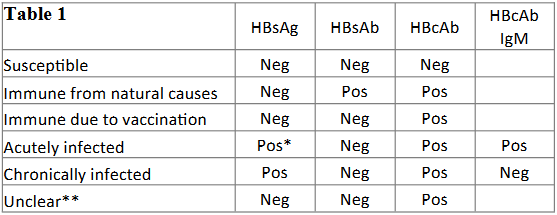Hepatitis B
Dr. Joseph E. Graas, Scientific Director
Dr. Edward Moore, Medical Director
Dr. Paul Robandt, Scientific Director
Hepatitis B, today is often overlooked in deference to focusing on hepatitis C, but continues to remain a serious, preventable and treatable disease that costs society and the individual greatly. There are estimated to be 1.25 million sufferers of chronic hepatitis B (CHB) in the US. A 2004 study estimated the following costs per patient per year in these categories: A) CHB $761, B) compensated cirrhosis $227, C) decompensated cirrhosis $11,459, D) liver transplant $86,552, E) transplant care $12,560, and F) liver cancer $7,533.1 The incidence since the development of vaccination dropped 80% between 1987 and 2004, but more recently has been noted to have risen substantially, possibly because of the increase in IV opioid use. The estimated cost to society of hospitalizations rose from $357 million in 1990 to $1.5 billion in 2003.
Even more concerning is the observation that 65% of those chronically infected with hepatitis B are aware of it, fewer than 50% of those are referred for care, and only 5% of those actually receive care. This underscores the importance of education of both patients and staff, testing in high risk populations at first visit, and taking appropriate measures such as vaccination or referral for treatment.
Hepatitis B is transmitted by exposure to body fluids through IV drug use, unprotected sex, and saliva to wounds as examples. It is estimated to be 50-100 times more infectious than HIV. Around 90% of adult will clear the infection but 5-10% will progress to chronicity. The conversion increases as age decreases from 50% in ages 1-5 years and 90% in infants. The death rates in the acute phase can be 40%.
Evaluation and diagnosis of hepatitis B can usually be accomplished by testing for the surface antigen (HBsAg), the surface antibody (HBsAb), and the core antibody (HBcAb). Liver enzymes are usually included to assess active liver injury. Interpretation is listed in table 1.
*up to 5 years of infection
**May be either resolved, false positive HBcAb, “low level”, or resolving acute infection
Testing for hepatitis B at most laboratories is via enzyme immunoassay, which detects a protein antigen or antibody produced by the virus. Testing is inexpensive compared to the cost of hepatitis to the individual and society. It is also a reportable disease and, without vigilance at the clinical level, will continue to be a significant cause of disability, loss of work, and economic impact.
![]()
References
- Lee, Todd & L Veenstra, David & Iloeje, Uchenna & D Sullivan, Sean. (2004). Cost of Chronic Hepatitis B Infection in the United States. Journal of clinical gastroenterology. 38. S144-7. 10.1097/00004836-200411003-00005.

